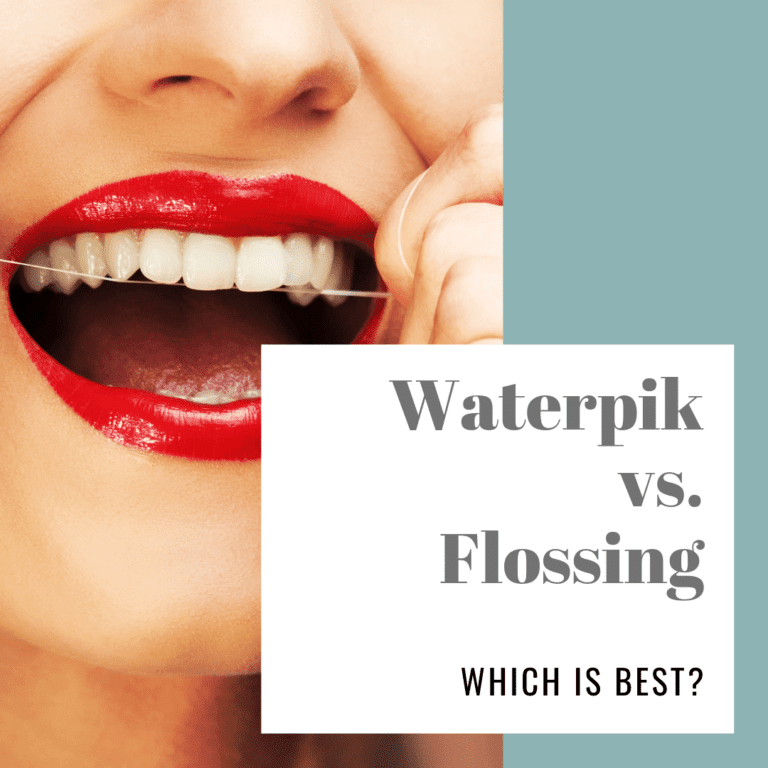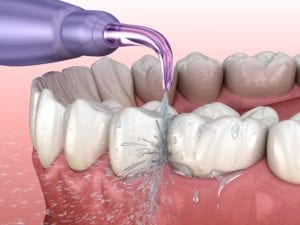Waterpik vs. Flossing: Which is Best?

A large part of having a beautiful smile is maintaining your oral health. Both your natural teeth and cosmetic restorations will need to be cared for daily to ensure that they stay in the best possible condition. The American Dental Association recommends that you brush at least twice a day and floss at least once a day. However, when it comes to flossing you have two different options to choose from: waterpiks and traditional dental floss.
Waterpiks, also known as dental water jets or oral irrigators, use a pressurized stream of pulsating water that can loosen and remove food particles, plaque, and bacteria. Traditional dental floss uses a thin string made from various materials to remove food, bacteria, and plaque. Both methods are designed to be used to clean between the teeth and along the gum line. Although they are designed to accomplish the same task, each method has its own set of pros and cons that you will need to consider. Let’s take a look at these methods in more detail:
Waterpiks

When using a waterpik, you will first need to spend some time determining the right water temperature and pressure settings. To prevent water from spraying everywhere, it is recommended to place the tip inside the back of your mouth before turning the device on. After turning your waterpik on, you can then move from one side of your mouth to the other, making sure that you clean the inside and outside of your upper and lower teeth.
The biggest pro of waterpiks is that they are very easy to use and are much easier to manuever than traditional dental floss. For this reason, they are a popular choice among people who struggle with dental floss or for those that have arthritis and other medical conditions that make using dental floss excessively difficult. Waterpiks are also able to get into tight, hard to reach places, making them an excellent choice for those with metal braces, crowns, dental implants, or fixed bridgework.
The biggest con of waterpiks is that sometimes water alone is not enough to remove all the dental plaque from the surface of your teeth because swishing water does not produce enough force. However, this is up for debate since most water flossers use a pulsated, pressurized stream of water that does more than simply “swish”. Another common con of waterpiks is the fact that they are priced much higher than traditional dental floss.
Traditional Dental Floss

Dental floss has been around much longer than waterpiks have and it has proved to be an effective and safe way to remove plaque from the surface of the teeth. To use dental floss, you will need to break off around 18 inches of floss and use both hands to gently move the floss around and between each tooth. This method is the primary pro to using dental floss, since it allows you to have the most amount of control to maneuver around each tooth.
However, the main pro to dental floss is also one of its main cons. While handling dental floss allows for more control in cleaning the teeth, it also means that you may be missing some hard-to reach areas that you can’t quite reach. Additionally, dental floss can also be potentially damaging to your gums if you are not using it properly and it can cause your gums to bleed, become inflamed, or even recede.






Recent Comments